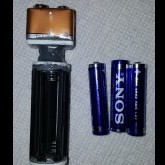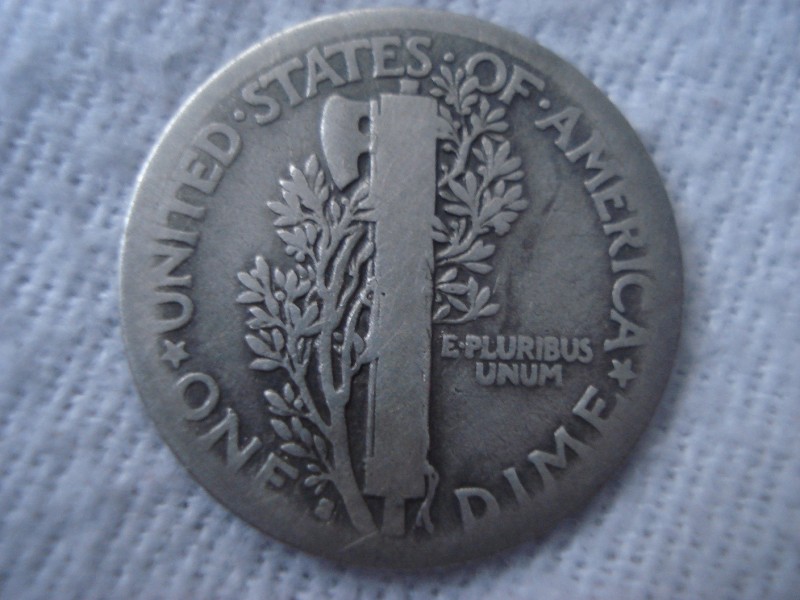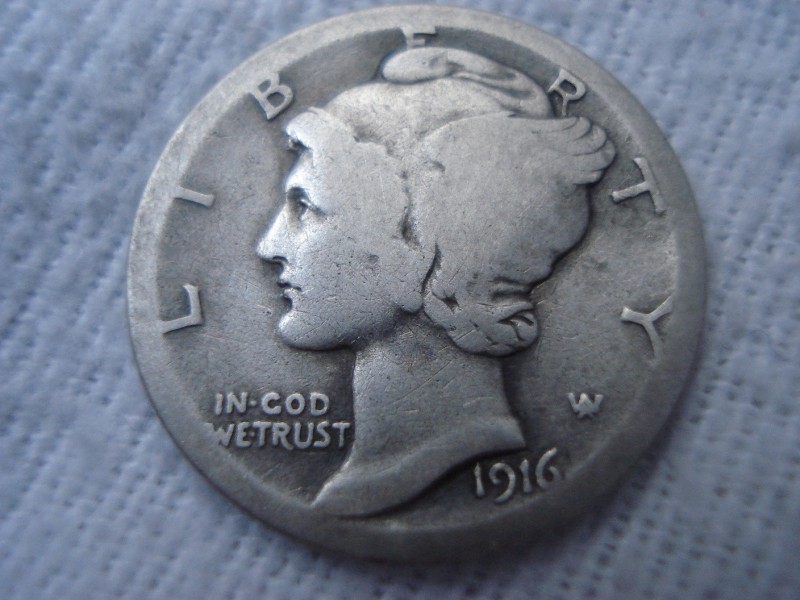Leaderboard
Popular Content
Showing content with the highest reputation on 03/27/2021 in all areas
-
17 points
-
XRF's hold sort a mysterious place on the shelf of semi-unobtainable prospecting equipment. 99% of prospectors don't need one. Maybe this post will help clear up some of mystery around these devices, and show where they can actually be worth the outlay of capital. And why for almost all recreational/hobby prospectors, they are not worth the money. What does an XRF do? In very simple terms you point it at an object and it will tell you what elements are in that object. More on this, and why it isn't this simple, momentarily... After sometime over 5 years of searching, I was finally able to find a used XRF I could afford to finance recently. These are not tools for recreation. They are expensive and require understanding how they work, what tasks you need to accomplish, and understanding the limits of XRF. The trick with these units is to find one with the proper calibrations already installed as they can be many thousands of dollars to send to the manufacturer to get configured correctly for mining/prospecting uses and to add/subtract elements or to calibrate for certain matrixes (silicates/iron/etc). X ray tubes and X ray detectors are about $6k each to replace, and recalibrations are about $1500 a pop, so even maintenance is crazy expensive. It's a tool you need be certain you need or can put to good use before buying one. And buying used, it's probably best to find one with as few hours use as possible to delay the inevitable tube replacement, as well as with a recent calibration certificate. My unit is an XMET 7500 made by Oxford (now Hitachi). The more common units people generally see are the Olympus and Niton guns. This unit has basically every mining calibration Oxford offered on it in addition to soil and other specialized mining related modes, which is very valuable and very useful for prospecting. It also detects down to magnesium without any fancy helium purge techniques. The guns sold on ebay with only alloy calibrations are pretty useless for prospecting without spending a lot of $$$ on additional calibrations. Some other things to consider are the machines themselves vary greatly between model numbers and some models may be unsuitable for specific uses in prospecting. A few things to educate yourself on are: Beam energy and detector type (determines if certain elements can be detected at all, and how accurately) Electrode composition (Gold electrodes have lower sensitivity to gold in ores, for instance) Calibration to light elements, or ability to detect certain elements I don't think an XRF is particularly useful for people who are only looking for gold. Due to the electrode limitations, the PPM minimum to detect gold in ores can often be above what would be an economic (and thus desirable) concentration in gold ores. But, looking for tracer elements (stuff like Pb, Cu, As, Zn, etc) can be quite useful. It can also help outline buried ore bodies which can then be explored mechanically via drilling or other methods. For prospectors branching out beyond just gold however, an XRF can be even more useful. And that's when one needs to understand the elemental limitations and what your application specific uses are. Any affordable XRF today will not detect lighter elements than magnesium. Some will detect to magnesium, but then do not contain calibrations to allow it (extra $$) and some require helium purging to measure light elements. Elements like hydrogen, carbon, oxygen, and sodium are very common "rock building" elements. But XRF readings will lack these measurements. So, when a looking at a rock your readings will often give fractional (less than 100%) results. This is why - the missing mass is tied up in atoms lighter than magnesium. Fortuantely, a lot of common rock types have unique fingerprints still in elements such as Mg, Al, Si, P, S, Cl, K, Ca, and Fe. But some don't. This is why it's important to understand what you are looking for first in the field, and then find a tool that is going to match your needs. Further, a lot of minerals in certain locations but not other locations will also have further fingerprints in other elements such as Cr, Co, Mo, Nb, certain compositions of rare earths, etc. To make it more complex (this part took me a while to wrap my head around), each calibration within the machine may or may not be configured for some of these elements - even if they are within the range of detection of the machine! Like, an alloy calibration will have little use for silicon or calcium. Conversely, a mining calibration without magnesium or calcium may be next to useless depending what you are looking for. Of course, it costs extra money to add elements and even if you have for instance a precious metals calibration that includes platinum, the mining mode may not itself include platinum and that's more $. That is why the matrix matters, each mode can be calibrated to a specific matrix. Like mining modes are generally going to assume that the sample is mostly silicon, whereas precious metals mode might assume the only things that exist in the universe are metals. So if you analyze solid metal with mining mode it may misidentify elements thinking they have to be metals when they aren't, same as if you analyzed a piece of gold ore in precious metals mode where it will try to assign certain non-metallic spectra in the ore to something like gold or platinum, giving you false positives. This is why calibrations available and elements assigned to that calibration is so very important when it comes to XRF and accurate results. Why else is XRF bad for gold-specific uses? (I emphasized this because this is primarily a gold prospecting site, even though I prospect for many other things myself). First one needs to understand how XRF works - simply put it kicks a few electrons out of a few different orbitals around an atom at discrete energy intervals (these are spectral "lines"). When another electron falls into the empty orbital to replace the vacancy, another X Ray is emitted at this discreet energy. Unfortunately, some elements have some very close to identical spectral lines. Look here at some lighter elements and see the overlaps on this visible spectra chart that we use to ID elements in stars? Some might be familiar with these from astronomy or high school. Well, the same happens in the X Ray realm. This is coincidentally why ionized gases look a certain color to us and how "neon" signs can be different colors (different elements inside the tubes). The same thing happens in the X ray spectrum, just not visible to our eyes. Except when the X ray spectra is reaaaaaaally crowded around the gold lines. Making it hard for specific ID's when other elements with similar lines are also present in ore, and unfortunately some of the elements are also commonly found with and around gold mineralization. Combine this with the anodes on many affordable XRF's being gold which itself interferes with really precise Au measurements, and you can see why an XRF isn't the best tool for specifically gold prospecting. Here is an actual XRF spectrum. You can see how very common accessory gold ore elements populate and crowd the gold spectral lines at various orbitals. And also how you might be missing critical lines if your X ray tube only goes to say 15kEV instead of 40kEV (EV stands for electron-volts), you might miss some Ag, Ru, Cd, or Zr fingerprints in this specific case. Now notice how iron stands all alone? That's why some elements (iron) are easier for an XRF to ID than others like gold. So for some such tracer elements in soils and ore, and identifying certain minerals which really can only be accurately identified via spectroscopy or thin sections as for some gems, an XRF can save months of time and thousands of dollars for in field qualitative assays to do first stage determinations, ie, wether a resource is simply present or not, ignoring actual concentrations. This is why it's so important for anyone considering one of these units to know exactly what they are looking for first, to know the limitations of XRF, and to know if a unit will meet their application specific needs. Almost every company I spoke with had a story about a prospector, or even a few cases some junior mining companies, who purchased an expensive unit only to find it wouldn't work at all for what they needed to do. So hopefully this clears up a little mystery about XRF's and maybe saves someone from making an expensive $15k mistake. I am by no means an XRF expert and everything I know is just self taught. So if I've included an inaccuracy then please correct me. This is not intended to be definitive, but just to share what I've learned over the years in a few pages of simpler to understand jargon for those prospectors interested in these devices. More later with some actual measurements...12 points
-
10 points
-
And I think this is it. The area is only 20 feet x 40 feet that has been giving targets and its like there is a line that you cross and all goes quiet. I detected in all directions and with this being soft sand I was able to scrub the sand so could see where I had detected and not missed much. I will just have to keep an eye on it for now for any more changes. This little area has treated me well!! Good Luck to All6 points
-
I haven't had a lot of time to post lately because work has been picking up, so I added some pictures of my favorite of my better finds. So in my town there was a water main break last Friday and it shut down one of the main thoroughfare through town. I took the detour Saturday, and realized it took me past a park I had only detected once with the simplex. I hated this park because of intense emi, and few signals. There is no baseball backstop, no playground, no soccer goal, but every time I've driven past or stopped to watch, there has been someone throwing a ball for their dog. All week I have been wondering how the new equinox would do there. After work, I stopped by and started working in the area where I seen the dog owners stand. Found a bunch of change, a bunch of pull tabs, but on the 12th to 15th signal I got a solid 17 that just sounded too good to pass up. I started digging thinking it was a bottle cap, and ok it popped the 14k ring. Very next signal 10 feet away was the 925 horse ring. It came in at 28-29 and I was thinking quarter the whole time. All the other finds have been since getting the equinox early February.4 points
-
When I had a low sodium level the doctor found that I had a blocked artery in my brain. The good news! Saw my doctor today and he thinks it's been there a long time. Maybe from a surgery I had 40 years ago caused it. He doesn't think the Neurologist will even see me. Yesterday I was thinking brain surgery and today it's good news! I thank God for that news! Rick4 points
-
4 points
-
These work pretty well for keeping track of pinpointers, $10. It auto retracts 4ft so keeps the pinpointer up high at the top of the backpack shoulder strap for running bigger coils, but long enough to get into 2+ft deep holes when kneeling down and digging. Strap is kevlar, hasn't broken on me after 3 years of field use, I just bought another one last week to put on a new pinpointer. Janitor tech for the win.4 points
-
Another forum member and I decided to explore some new ground about 80 miles from home in Sunny Yuma. We were working off some of the old USGS pubs for ideas on new areas or at least new areas to us. We set off yesterday exploring offroad in the RZR for these extinct placer works. The first 2 locations really did not look like gold producing areas and we couldn't find any evidence of old workings. Abandoning that area we just started driving some of the old tracks looking for evidence of placer works. By early afternoon we had about decided to give up when I spotted a new, bright yellow claim sign down the end of a wash. We drove down there to see what was the ground looked like. A quick hike revealed the claim owners were drywashing a small gully to bedrock fairly recently. We decided to take an adjacent wash and see if we could find similar looking ground. We drove to the end of the wash and although it was getting late in the day we set off to explore the zone about 1/2 mile from the other claim. There was no sign of placer works in a series of desert washes with shallow bedrock. About 30 minutes in, I get a decent target sound and started digging. My friend ended up in the same gully and came up as I was digging. We got to bedrock and using a pinpointer found a small nugget. He went on while I finished up. I swept the hole one last time and got another tone. To make a long story tolerable, I found 4 nuggets in the same hole. I got another couple tiny nuggets on the way back to the RZR, he got 1. We hit it again today trying to expand on our search. I found a decent nugget right off, then nothing for the next hour. We met up to compare notes, he had found 1 as well. We split up again and not 50 yds away I got a good tone right next to a bedrock dropoff. I dug for close to 45 minutes pulling 8 small nuggets out of the same hole. I found nothing else the rest of the day. He found a spot that produced 3 nuggets in the same hole and a spot that produced 2 nuggets in the same hole. It's not unheard of that certain conditions concentrate the nuggets in a favorable spot. But, the rest of the wash was apparently barren. I supposed if we dug through the overburden there might be more small nuggets on bedrock, but that's like working. We were in essence "blue sky" detecting, not having any specific knowledge about the area. Here in Yuma you can't find a desert wash that hasn't been drywashed, so you have a clue that gold has been found before. Out there, there were no clues to previous gold finds or what might be gold producing areas. So we were lucky, or as Louis Pasteur said "Luck favors the prepared mind". Hard work and persistence paid off this time. It's the possibilities that keep us going, not the probabilities. I'm not computer literate enough to fix these angles, Steve H will step in at some point and make them more viewable. 2.38grams is yesterdays single hole. 2.78 is yesterdays total. 2.52 is todays from a single hole. 1.10 is the lonesome nugget I found this morning. The scoop in the hole shows the glory hole of 8 nuggets. The other photos are both our nuggets from today on the tailgate of my truck. I don't have a weight on his nuggets.3 points
-
I played with a app called spectrum (for iPhones) to look at detector speaker output from a pi machine, it would probably work better with the signal discrimination of a Nox. Using a phone or mini-pad attached to a Nox would be a great way for a hearing impaired person to detect and be able to see what type of tones are being output from the detector. The image below is a screenshot of the output from Spectrum. It is pretty basic, but it displays real-time frequency, timing and amplitude (dB). It could do this with input from the detector to the phone of target and threshold signals (you would have to watch it real-time to see signal timing). It looks nice and gives some information, however I don’t think the processed sound could be used for digital target recognition, there isn’t enough information for the processed audio signal to do that, but perhaps the raw digital unfiltered signal output could be useful for that- it may have smaller signal nuances that when compared to other known target signal files may me used for this. The technology for doing this is used for Identifying bat species by their call signatures, but there is a lot more species specific information in a bat call including timing, frequency and harmonics. Maybe detecting will go there one day, hopefully soon!3 points
-
3 points
-
3 points
-
Not sure what coil you are using most these days, but with the 17" I have to have my pointer at shoulder height with the pinpointer hanging over my shoulder and behind my back to not interfere. So the way it works is I grab the pinpointer from behind my armpit basically, then just let go when I'm done and it retracts back. It's attached to the top d-ring on my shoulder strap and naturally hangs on my shoulder blade/back more or less. I tried the Minelab Pro Find - which is supposed to not interfere with the GPZ when off by disconnecting the loop to avoid inductive responses on the GPZ - with no luck. That pointer is garbage and I have to assume Minelab doesn't actually manufacture them because it's beneath their usual standards. I have a Nokta pointer that is ok but has issues and I retired it. The best pointer I have is the Garrett AT Pro Pointer, and I just bought a 2nd one since I've almost worn through the plastic on my old unit. But it will interfere with the GPZ when too close, which is frustrating. Even at shoulder height with the 17" coil I can hear it with each left swing if I leave it on my chest instead of on my back. The Garrett is about the best around when it comes to depth and sensitivity to tiny bits. But due to the interference, I only use it when I'm working bedrock, in very deep areas, or around delicate specimen type gold that I don't want to risk damage, and unclip it for normal detecting. I really wish a manufacturer would make a pinpointer that doesn't interfere with the GPZ when off because then it could mount it in more accessible places.3 points
-
I was one of the first to get an 800 in the United States. I got on Bill's waiting list several months before the release. Since then I've had to replace the control unit because of a broken switch. Everything has worked well and I've found lots of good targets. Along the way I bought a pair of Avantree headphones and they work fine but I prefer the Minelabs. Today I put them on the USB charger. I've had to fiddle with several different power cords the last few months but eventually I get the red charging lights to come on and that was the same today. When I picked them and the charged 800 up the charging lights were out per normal. When I got to the beach to connect I couldn't get the 'on' tones for the headphones. They were completely dead. I've since fiddled with them and tried multiple cables that had charged them before but I can't get the 3 little red charging lights to come on. I've cleaned the mini leads with alcohol and jiggled everything but no go. Is it dead? haha I'll use the Avantree until I can get another pair of the originals. They don't need to be new.2 points
-
Hi, yes Victoria 1900 six pence will be .925 silver. The British silver coins dropped to .500 in 1920 then no silver in 1947 - both dates significant as a couple years after the end of the respective World Wars and the same reason - to help pay the war debt.2 points
-
A very handy tool for prospecting. Arsenic is the main indicator element in our area. To save money on assays I zap every soil sample then only send the ones away with elevated As. They are a great toy to play with, my mate and I end up zapping everything in sight. Would never eat fish again if you seen some of the hits we got on them! Another interesting one, Caterpillar wanted $8k for some head bolts, being tight arses we got the $600 after market ones. Once we zapped both the composition of them was identical!2 points
-
Reset never hurts, though it may not work in this case. Still, here it is. Owners manual page 56-57: ML 80 Factory Reset Factory Reset will return the headphones to factory presets, and will unpair all paired wireless devices. 1. Turn the headphones off. 2. Press and hold the Multi-Function button for approximately 10 seconds, until the headphones beep twice and the Status LED flashes pink. 3. Release the button. The headphones will now be in pairing mode with the LED indicator flashing blue and red.2 points
-
2 points
-
As a diagnostic, can you plug the ML headphones into the WM08 module to see if that part works? Someone said the ML phones are same parts as the SR71 headphones so you might find some battery replacement video or instructions for those. (The new ones have a BT problem with ML but I have not followed that thread, may be OK now)2 points
-
Hi Jasong Our company owns an olimpus vanta. I have also used the Nitton gold3+ too. It costs $50 000 aud + extras so it a bit out of reach of the hobby prospector. For gold exploration you need the Rhodium xray tube as the accuracy with the other tubes (tungsten or silver) is very low on Au and PGM's. And a lot of the gold areas we are chasing have mostly free gold and little of the pathfinder elements accociated with them. Although the pathfinders are always elevated near the deposit in relation to the backgound norm for the areas, they may only have a small halo and this may only be slightly elevated. This is probably due to the large amount of water we get in such a little time here with our tropical wetseason. Which can render the pathfinders of little use to the explorer up here in parts of northern Australia. But in the more arid areas they are of much greater use. Our xrf has the gold and pathfinders suite but we also got the rare earth and base metals suite's too. But each program is expensive and an added extra. A suitable xrf is an essential tool in a modern technologically advanced exploration company. We have developed 2 special ways that we prepair our samples which increase the accuracy of the scanner and allow it to accuratly detect down in the lower end of its recomended minimum ppm. Our results closely mirror our assay results since developing these methods. Which further increased the usfulness and reliability of the xrf results for field use. The scanner saves the savvy user 1000's in assays and weeks in waiting time for assays which can be a real pain if you are in a remote location, as you may have to return after good results to resample a hot area further. It is much easier to be able to make on the spot decisions on the viability of further samples and when a hot area is discovered you can concentrate your efforts on that area rather than just taking grid samples and sending them to assay. There is also another technology that is of use to the modern gold explorer it is called LIBS. LIBS as an Emerging Analytical Tool for Mineral Exploration - SciAps https://www.sciaps.com/newly-published-research-libs-as-an-emerging-analytical-tool-for-mineral-exploration/ I am are looking at ways of increasing libs usefulness in gold exploration. Its limiting factor is that it only scans a very small area which can give you inaccurate results but Im trying to addapt the same technology but from a different sector where they use it in a different way that should prove very useful when addapted to exploration.2 points
-
The first one that Joe showed is great I have used mine for years when bushwalking. It was more than great for digging holes for toilet use in all ground type. The titanium is super.2 points
-
2 points
-
Maybe the battery died? Will it turn on with an external power cord attached (I have no way to test mine like that as the battery is new). If you are going to replace it, see if uou can open it up and put in a new LiPo battery.2 points
-
Thanks Popeye. After a a few hours I realize I have "a lot of learnin' to do" on beach detecting. I will be re-reading all the beach detecting posts with a little more context. My finds today look like I would have expected for first time out... clad and trash. I was lucky enough to find a '64 Rosie.. that was unexpected! I definitely need to study up on how to read the sand, and whether to hunt the wet sand or the water (waders). This beach is pretty flat, and no visible cuts today. Trying to figure out how to work the "washboard" sand, as those areas seem to be the most noticeable difference from flat, smooth areas. Just need more practice. :) had a great time today.2 points
-
That's cool, I saw a similar one except it was on a forum back in 2003 or so that dealt with building coilguns and railguns and a guy posted a SEM DIY tutorial. These newer ones look like better designs, and easier. I actually have most the stuff in the SEM guide other than the HV Arduino shield, I even have that finite element analysis program they are using, it's not really needed though. I've been thinking about making videos again except not prospecting/detecting since so many people are making those nowadays. I thought it'd be fun to build amazing stuff like this that few have heard of, out of stuff laying around. My first project is going to be building a laser out of common household trash I find laying around McGuyver style (semi cheating since I've done this before out of 50% trash basically so I have a rough idea ahead of time what to look for), then I might look at a microscope. Those crystalline gold STM photos are cool. I wonder if cryptocrystalline structure pattern analysis could be used to track/match placer gold to it's lode source. I don't think anyone has ever studied that, mostly they just do elemental fingerprinting.2 points
-
Silver and gold.... You can't beat that! Great hunt and a good return of good vs bad targets.2 points
-
Great introduction, Jason. I was familiar with using microprobe analysis with electron microscopes to identify elements in microscopic targets such as plankton shells for research back in the 80’s, (it was basically the same as XRF, but not a very portable version), and am amazed at seeing how portable the technology has become! I don’t need a hand held XRF gun, but when those GPXRF 8000 mono coils are finally released to the public for doing lead discrimination, I will be one of the first wanting to pre-order it! 😁2 points
-
Well after reading all the post I went and put my lady pants on it made me very sad hearing all how thing are and I am very mad watch out mindlab why why are we treated this way i just came me that we are just going to face it that mindlab not a metal detector company anymore they are in the exercise company they make use go out in the mountains to get a work outs swing metal dect make our buns look very nice now I am in love with mindlab my lady pants are off now and the world is great2 points
-
2 points
-
2 points
-
And here I was expecting the water main break washed out some silver and gold! You got me!!😂 Great finds nonetheless!! Keep it up!👍👍2 points
-
Depending on the type of shovel you prefer, a titainum shovel is the lightest weight vs strength metal preferred by hikers! Like the high grade aluminum, it also another option! Though it may be more expensive, it is lighter and more durable than aluminum! Here are a few examples from a quick search! When I hike, I always have a walking stick for stability and defense! You could adapt one end of a walking stick to accept a shovel head when you get to your location! That way, only the shovel head will need to be on or in your pack! A couple stainless screws will secure it reliably! Good luck!👍👍2 points
-
2 points
-
King, I would 'quote' you but it won't let me do that. To answer your question, I've been through lots of scoops. This one is from a guy in Van Nuys. I've been using it for over 3 years and it looks like the day I bought it. There is no give in the basket. This scoop doesn't let me get into too much trouble with a larger amount of wet sand in the scoop. I have a left shoulder strain that doesn't want to go away. This doesn't aggravate too much. I have a Lithuanian scoop (actually 2) that I can step on like a shovel but it requires a crane to lift it out of a hole. If I was digging really deep targets like the last couple of days then I'd use it more often. I have to admit there are some wet holes I don't get the target with my pull scoop. But I can't think of my really deep holes as really good value targets either. I'm sure others have different experience with good, deep targets. Mitchel2 points
-
Dam Aussies wont let me in yet......... bugger all... Starting from Big Spring TX (dust storm central today) and heading west on I-20 to I-10 then thru New Mexico and im pretty sure I will be slowing down as I go thru AZ----- then either on to LA via Rand quad or sweep up thru Vegas and on to, tri-tip Luckys Cold Springs Hideout---- then take a left over the pass and on in to Porta-toilet where Sourdough Scott hangs out so i can pick up a jar of relish!!!!!---- next would be a refreshment stop in Quincy area to see a few old mates---- then on the Redding area, and over the hill to Eureka- then North to Alaska..... YOU HAVE ALL BEEN FORE-WARNED..... use your due diligence to decide if you want to be in those areas.....hahahahahaha.🤣😂🤠2 points
-
Mr. VAPaul; Please wear your mask when you pass through. I'm not concerned about a virus but your mug scares my horses. keep me posted on your journey.2 points
-
I am not worried about depth with the Impulse AQ. Rest assured it delivers the goods there, and in some sandy areas it goes deeper than you really want to dig. I hate that stuff where the hole ends up wider than it is deep. Anyway, for my initial runs I wanted to use the AQ as intended - to hunt ring type targets. The AQ has two basic types of discrimination. First, the all metal "shaping" discrimination familiar to PI hunters and some VLF all metal hunters. You use various audio "tells" to pick and choose targets. The classic being the elongated target "double blip" often used to identify nails and hair pins. Alexandre was kind enough to provide this sketch on this thread you should read: This works pretty well, but not as well as we could wish. It is great for items positioned well and at the right depth. But what about nails or hair pins at a 45 degree angles and at max depth? Plenty of deeper items sound good near the edge of detection depth where the signal gets smaller and softer. Bottle caps can have you digging to the center of the earth. What about two targets close together? I was nugget detecting after a guy who passed up a nail and sure enough it was a classic nail double blip signal. Funny thing when I dug it there were two gold nuggets weighing about 1/4 ounce total sitting next to each other! Flat items on edge, like a quarter on edge, can double blip. So these ideas are good but do not think they are perfect. The main problem is we all pat ourselves on the back for those items that sound bad and we pass them up... but were they really? You honestly do not know. But the assumption they all were bad skews the thinking about this type of audio discrimination. The reality is some good stuff gets passed up, but we are accepting that as a trade for not digging everything. It all seems fine until somebody does like I did and finds something great right after you passed it up. I'm 90% sure I did not dig a 25 ounce gold nugget that a newbie found instead. Why? He was too stupid to know it was a coffee can! Anyone that thinks they have this stuff 100% figured out is kidding themselves. A very good trick is to know that a hot PI mono coil will signal small stuff on each edge. So small shallow targets will signal under each edge of the coil. Also a double blip deal, but different than the elongated item double blip. You have to be paying attention, but with a little practice it becomes second nature to pass these up if that is what you wish to do. This is going to be the majority of the wire ties, hair pins, foil... just all manner of surface stuff, mostly very small bits and very often lighter stuff that does not want to sink. It could also be any recent drops, like an ear ring, chains, small pendants... just anything small and near surface. Now, that seems crazy and maybe it is. Again, remember the idea here is to hunt rings, and so the focus is on nice, defined signals as in the diagram above. And here is the real kicker. These really are VLF targets and if that is what you are after, the shallow stuff, break out a VLF! The second part of that is an assumption the area has already been hunted, maybe a lot, with VLF detectors. They have already found the good, shallow finds, and really skewed the numbers for the shallow stuff into being trash. So, let's skip all the shallow stuff using the coil edge sensitivity trick, and elongated items that double blip. Now let's give up a little depth, and use the AQ tones mode with default ATS and Reject settings. I prefer tones because a lot of ferrous will make both high and low tones, and mute lets the high tone through, and fakes me out. Tones will be better on at least some bottle caps at giving a high tone with a low tone edge to it. Lots of ferrous will give solid low tones. If you hate digging coins in the surf, dimes and quarters and clean zinc pennies will give a clean low tone. So will silver rings unfortunately. Some ferrous will not low tone. Hair pins and wire in particular. But if we use the audio tricks above, you can get rid of nearly all the wire by eliminating double blips and shallow stuff. That leaves bottle caps as a main offender, some you get a ferrous edge, some you do not. And then there is a weird selection of deeply rusted or mixed content items, like plated steel. Which is the problem with many bottle caps by the way. Round rusted lids from old steel cans. Some ferrous has corroded so much the metal is near gone, and it reads more in the ring range. And ferrous stuff with holes can be a problem. That may all sound horrible, but I used all the tricks together for eight hours of detecting at two very different fresh water lake locations. One much like a Hawaii style beach with people to match. Hair pins and bottle caps are the offenders. The other more a locals beach, with tons more trash, especially big ferrous stuff. I hate to admit it, but I often detect without finding great stuff. But I always know if I am doing well by looking at my trash. For nugget detecting, if you are not finding gold nuggets but finding bullets, you are doing everything right. And for rings, I want to see nickels, pull tabs, and unfortunately, corroded zinc pennies. If I am digging them, I am confident I will find the rings. In fact, when looking for gold nuggets if I can't find bullets.... somebody has cleaned the place out. And if I can't find pull tabs and nickels when looking for rings.... hmmmm. I don't mind finding trash per se, because the worst thing of all for me is a place where nothing goes beep. The first area I hunted about five hours and finds were few and far between. Remember, I'm cherry picking what sounds like a good item based on the above. There were tons of shallow surface targets, but I left them looking for those deeper defined signals. The other location I hunted this morning for about three hours, but I found more than half the targets there. I liked it better, so will be going back. Very heavy magnetite concentrations, so lots of VLF type signals that the VLF crowd is missing entirely. So here is the haul after 8 hours digging. Not a ton of digs, just what I thought sounded good using all the tricks above. In my opinion, no worse than a VLF... but a VLF would not have found most of this stuff. Click or double click for larger version of the picture at bottom. 14 nickels 6 corroded zinc penny bunch of tabs bracelet, two ear rings, and a cap with insignia couple shell casings (pray you do not get into a lot of .22 casings) and 3 shotgun ends A few hairpins that sounded good. A few bottle caps that sounded good. Some odd ferrous that sounded good, including four fist sized things I discarded at the beach. And the way that spoon is bent - cooking drugs I'd say! The Hawaii style beach frankly all metal and just using audio tricks would have been good. No big ferrous to speak of. The low tones were probably mostly dimes and quarters. The other beach? Land of ferrous. Huge number of low tone responses. The Tone Mode paid off there in spades as far as I am concerned, and allowed me to pick the nickels and tabs remarkably well. My bottom line on all this folks is I am only getting started, but this machine is an easy read for me. But I am very, very used to this kind of stuff. That's good though because I can tell you that compared to prior machines, if you are a PI type person who thrives on this type of detecting, I think you are going to like the AQ. There is a lot of audio to work with. You VLF guys... I don't know what to tell you. It's not VLF, and it requires a whole different skill set. Some of you will just hate it. Others may be pleasantly surprised. All I can say is the picture below is a no BS look at the target mix, and to my eyes at least... lack of gold excepting... I am really happy with what I am seeing. In general I will probably revert back to all metal hunting in most places, but if I get into the junk, Tone Mode will be a genuine aid. More tools for the PI tool kit, and frankly I'm still a newbie with the machine. It is only going to get better!1 point
-
Thanks! I had to look them up, at first I thought it meant gold filled. Lol never heard of the guy till now1 point
-
I got my 800 early into its release. At just under a year of having it, I experienced headphone failure almost exactly how you describe. I tried everything with no success. I called Minelab and they sent me new headphones under warranty. If I remember right, they did work corded with the Wm08. I have been using Apple AirPods and like them for general detecting. Good luck1 point
-
https://www.livescience.com/worlds-oldest-meteor-crater-debate.html1 point
-
1 point
-
Try going about 15-20 feet on the other side of that line and try it again. There could have been an old structure that sat on the beach in that area. Great finds in such a small area so keep it up. Good luck and happy hunting.1 point
-
I found the top one you have at a old boy scout camp camp and it's made in Canada.1 point
-
1 point
-
Dogodog At this point I had been thinking about buying back into a multi frequency are one that’s really a special type what’s being called a beach detector. Without name calling it makes it hard to say what one is referring to. It was a name contest for their new detector that you would think we should have seen last year but here it is another year is here without a word. I don’t want to turn my back and walk away because if I buy another I won’t be back this year for sure. I’ve said my last day to wait will be May because of a birthday that month. The only thing to keep me pulling the trigger on another is a word from Dilek sooner than soon. Chuck1 point
-
As my current sites get hunted (by me), the clean hits become fewer. I've been working quite a bit this 2021 trying to squeeze out good (non-ferrous) targets which are far from perfect signals. Yesterday in a schoolyard I've been searching for the past 3 years and have 'covered' at the 80+% level I went to an area that has produced multiple old coins, including at least one of each of the following: Mercury Dime, silver Wartime Nickel, and Buffalo Nickel. I've also found multiple Wheat pennies. I don't know if I had been over this target before. Minelab Equinox 800 w/11" coil, Park 1, no discrimination, custom 5 tones, Recovery Speed = 4, Iron Bias F2=0. I got a decent high tone (my custom high tone range is 20-40, corresponding to clean/fresh Zincolns and up) but with iron grunts mixed in. The digital Target ID (dTID) was all over the map, from 21 to 39. I was able to circle the target and get at least some high tone from about every direction. When I pinpointed, I at first got pulled to an iron target nearby but was then able to hone in on a decent location using multiple pinpointing methods. I dug down a good 6 inches without a reliable Garrett Carrot response, rechecked the target's location with the Eqx, and then noticed a weak signal with the Carrot to the side-wall of the hole. Digging into the sidewall at the 5-6 inch depth the Carrot got stronger, and I switched to the more accurate White's TRX to hone in on the location (to try and make sure to dig around and not through! the item). I never got a great signal from the TRX but after pulling out another scoop of dirt I noticed the signal was now missing in the hole and with a bit of hunting around in my catch pan was able to see a dirt caked dime sized target. Normally silver coins show a nice white color but this one didn't, making me think it might be a clad dime. But a spray of water showed the Liberty head and I knew it was a Barber. (Arriving home and carefully cleaning in water only I was able to discern the 1904 date, no mintmark meaning from Philadelphia -- a common coin but still a keeper as are all silvers.) I continued to investigate the spot and about 4 inches radially from the dime's location but shallower (around 3") I recovered the rusty nail shown in the photo. This was about where I had initially pinpointed an iron target (mentioned above). But I don't think my final pinpointing location was affected by this nail (don't know for sure) and conclude the dime was on edge. I must say that this dime signal wasn't a lot different that several iron targets I've dug in the last several hunts. In the 2 1/2 hour hunt I only recovered four other coins, a Zincoln, a copper Memorial, and two stacked clad quarters reading 31-32 dTID (which is high for a single clad quarter, normally 29-30). This is the second Barber Dime I've found in this schoolyard, but the mystery is why it was there at all. The original school (since replaced) was built around 1955 and prior to that the land was a livestock pasture. I know that the location of the original school (which I was either right over or very close to) was backfilled. I've now found 4 or 5 silver dimes here and none has been a Roosie. The time window for losses from the school is 1955-70. It's possible the two silver Barbers were dropped in that time period but it seems unlikely given that would have occurred 40-55 years past their last minting. My hypothesis has been that in the process of filling in the hole where the school's basement was located and further smoothing the schoolyard that fill was brought in from elsewhere -- possibly somewhere else in the town where street excavation (new utility lines, etc.) was being done. And the mystery rock/mineral in the picture? That earns its own post in the minerals subforum.1 point
-
Nothing that is enough that anyone has noticed or found it. The update gives you 4 kHz. The previous one added F2. The one before that repaired some silver disc mapping. That’s it really. https://www.detectorprospector.com/forums/topic/13347-equinox-software-update-30/1 point
-
Thank you. The good stuff is very rare in my old hunting spots. I know it’s there, however wether I’m hunting in the lake or in the dirt you’ll generally find me amongst the iron and trash, areas most hunters avoid, that’s were the last of the good stuff is. By hunting in trash you’ll also learn a lot more about your machine (any machine) as you’ll be digging A LOT more targets, co-located w iron and aluminum. In my videos I’m emphasizing a more educational approach, how to use the TARSACCI, not so much,,,” look what I found” type of video. Making videos is not fun, especially when your trying to do them right. Editing is even harder especially when you have 2hours of video that needs to be condensed down to 15min, very time consuming.......🥴 HH! Aaron1 point
-
Reply directly from Dilek that there will be no 2.79 update!!1 point
-
1 point




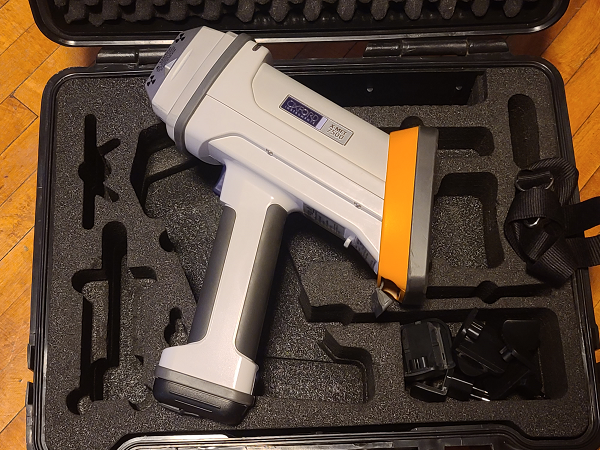

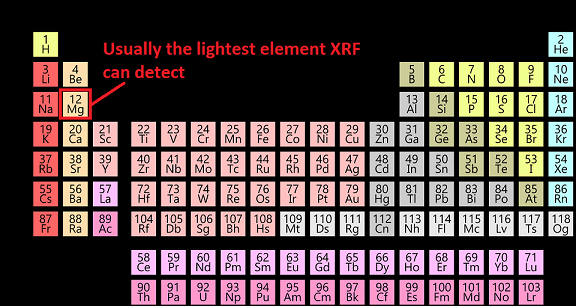
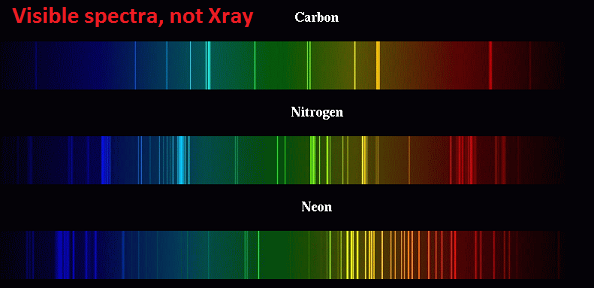
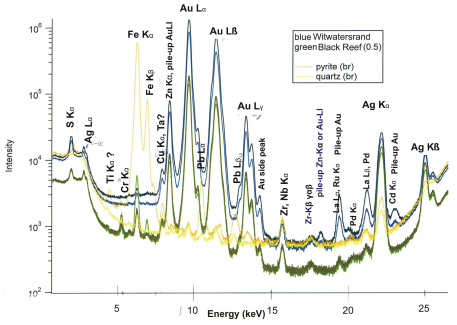
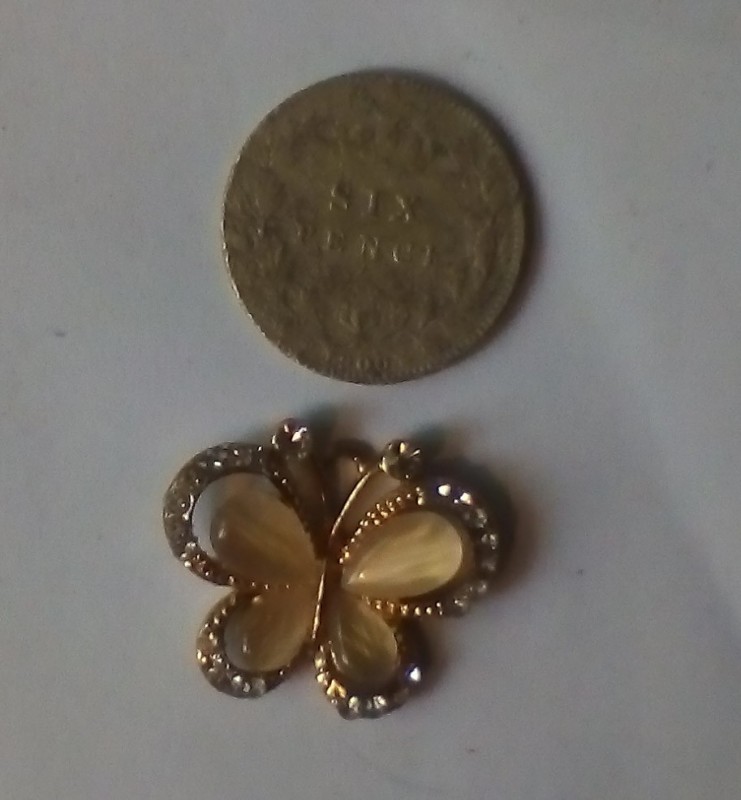
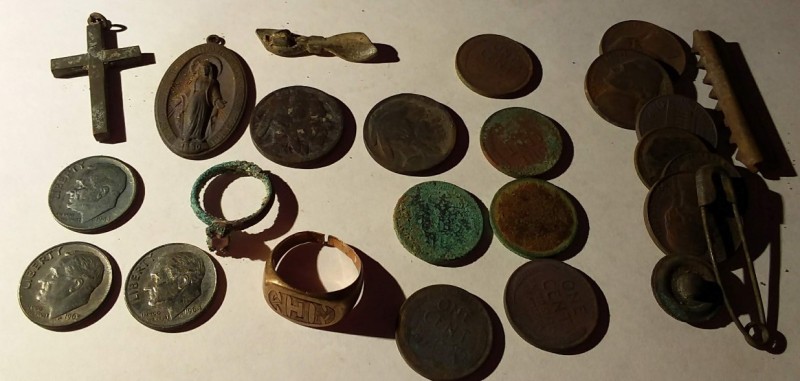
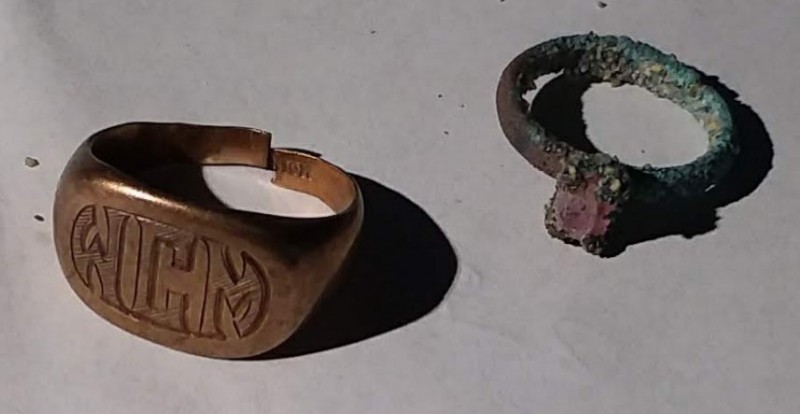
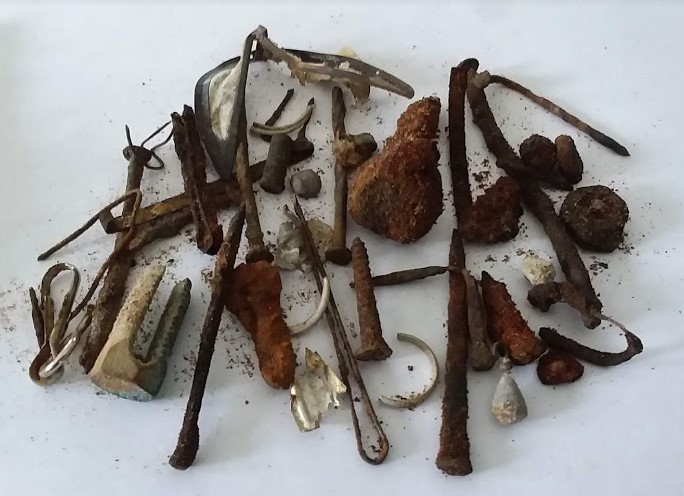
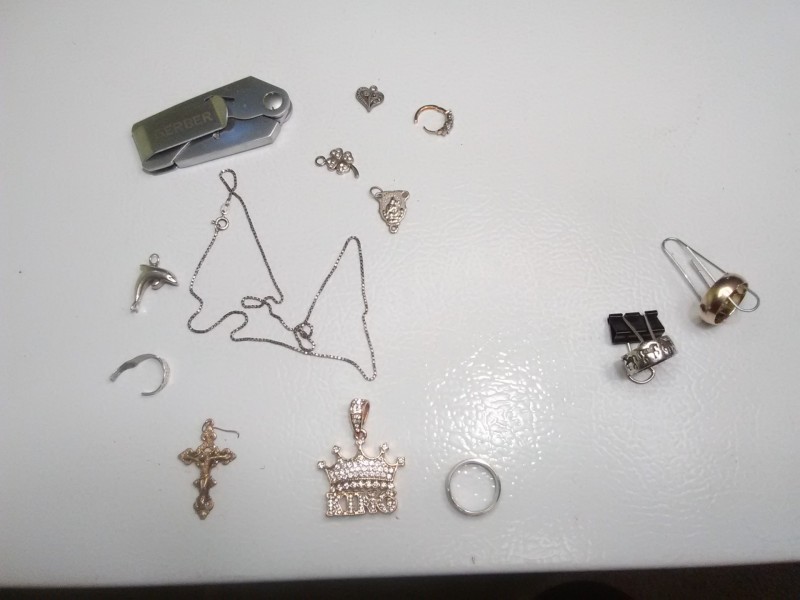
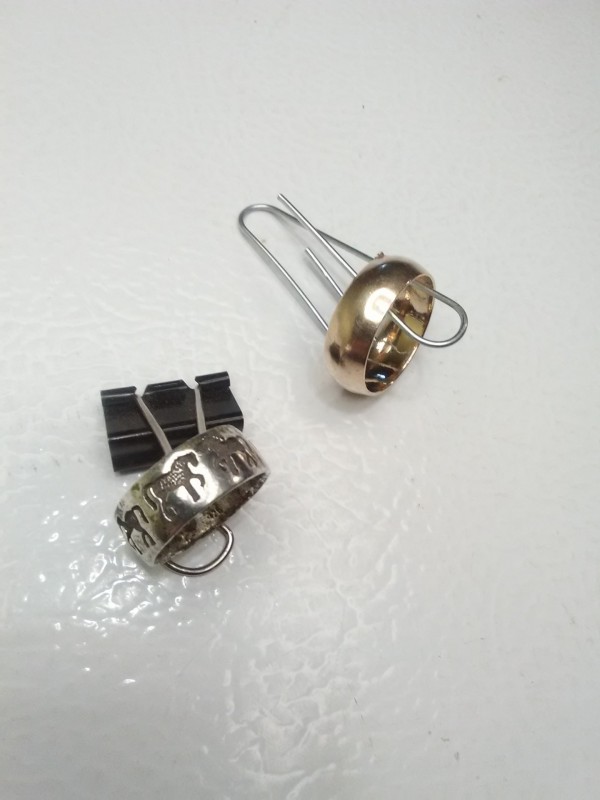
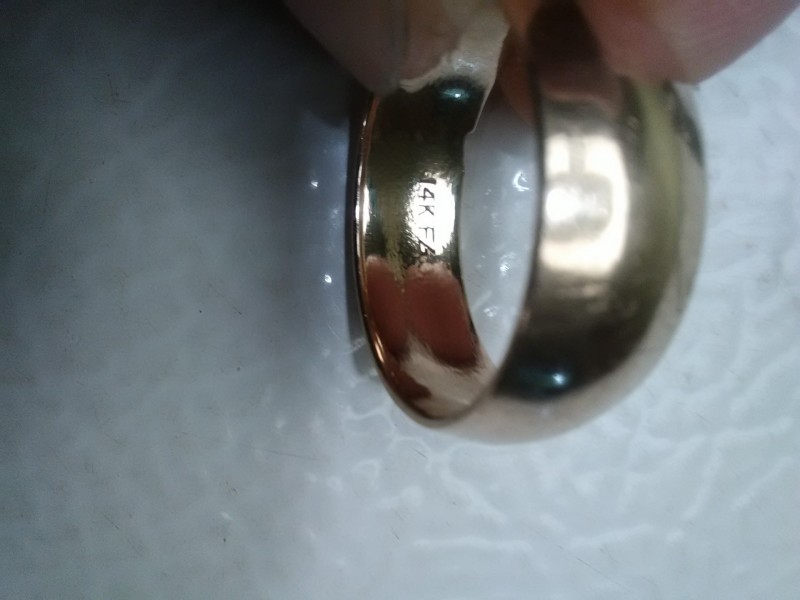
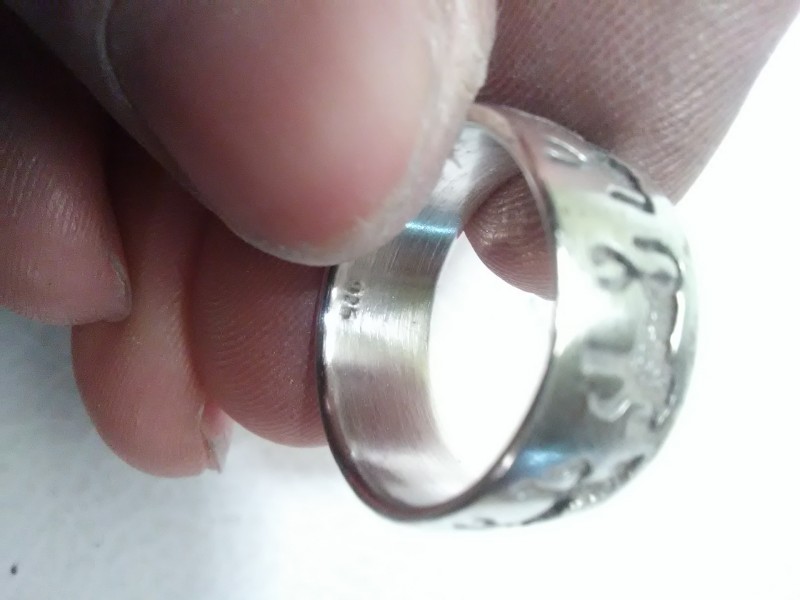

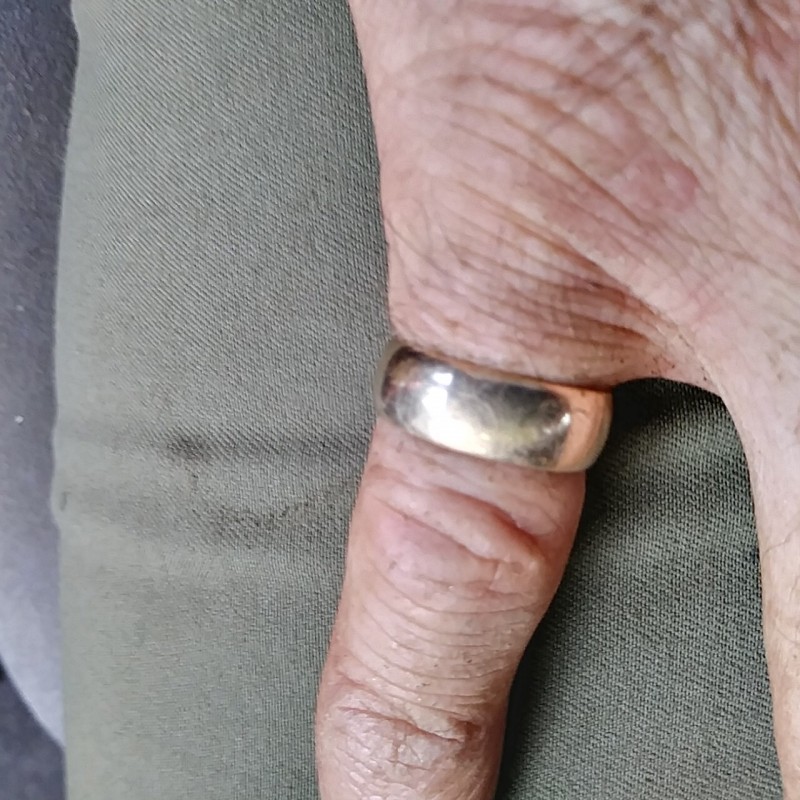
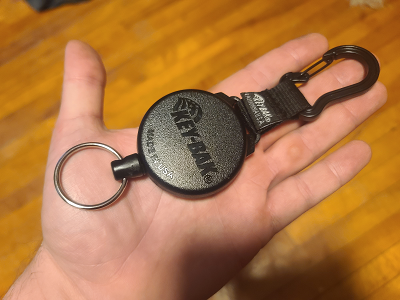
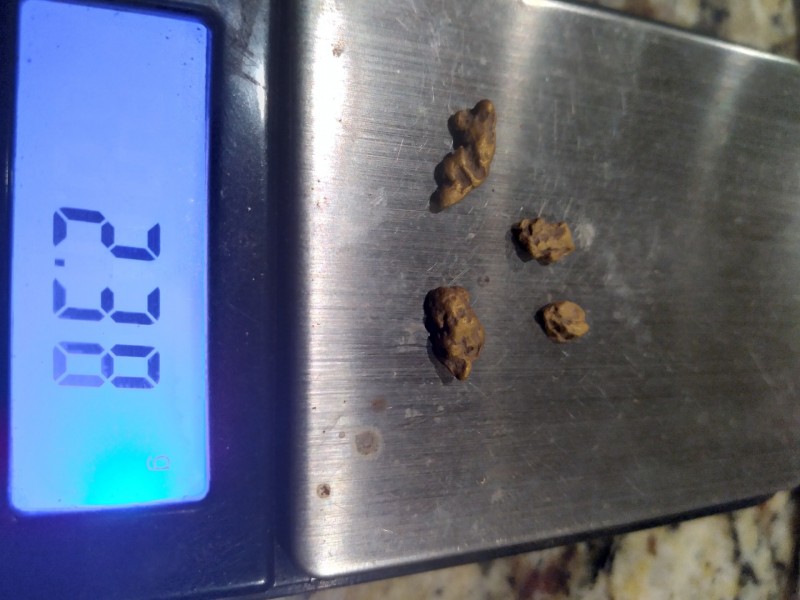
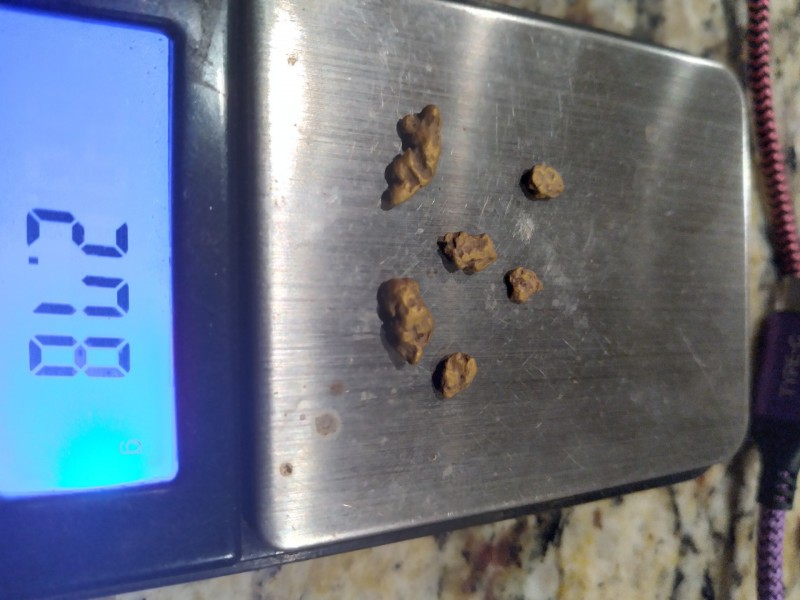
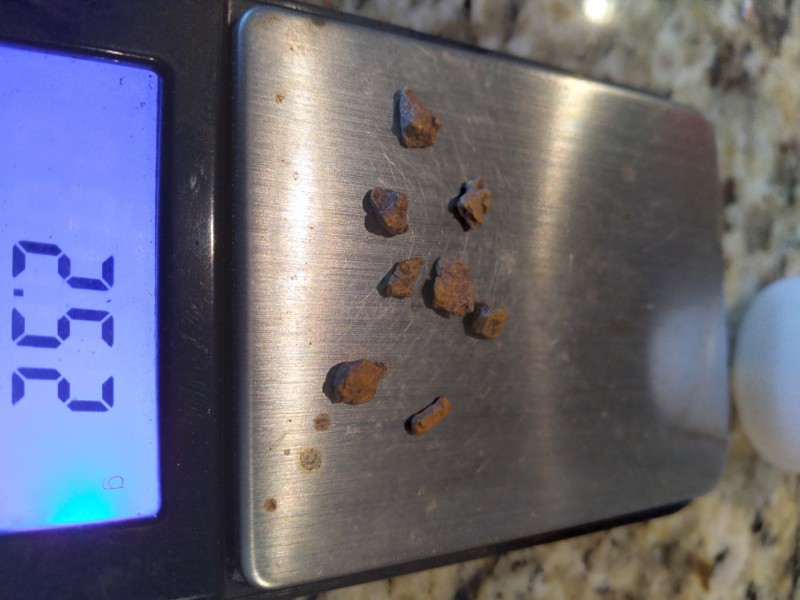
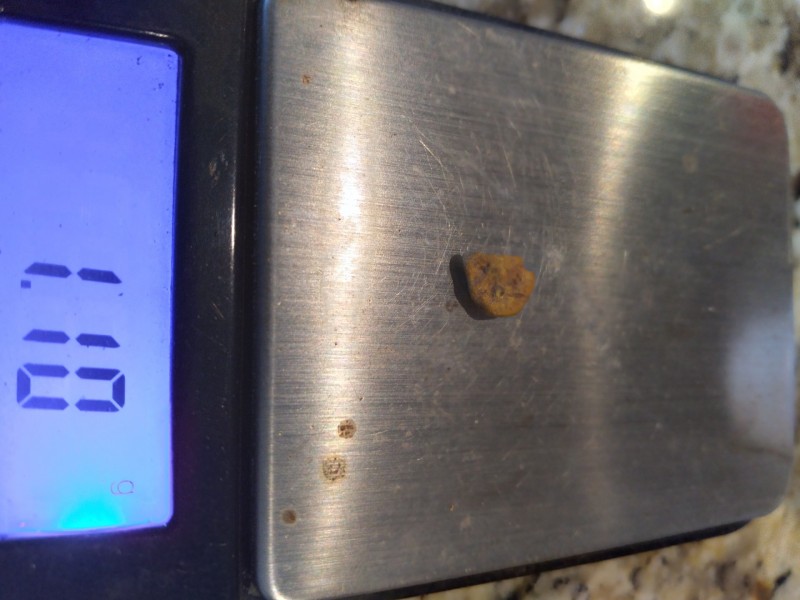
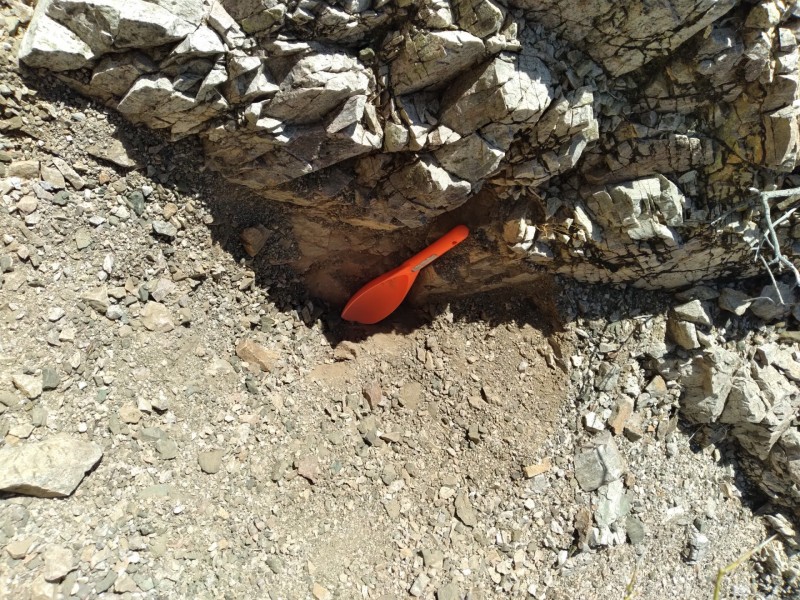
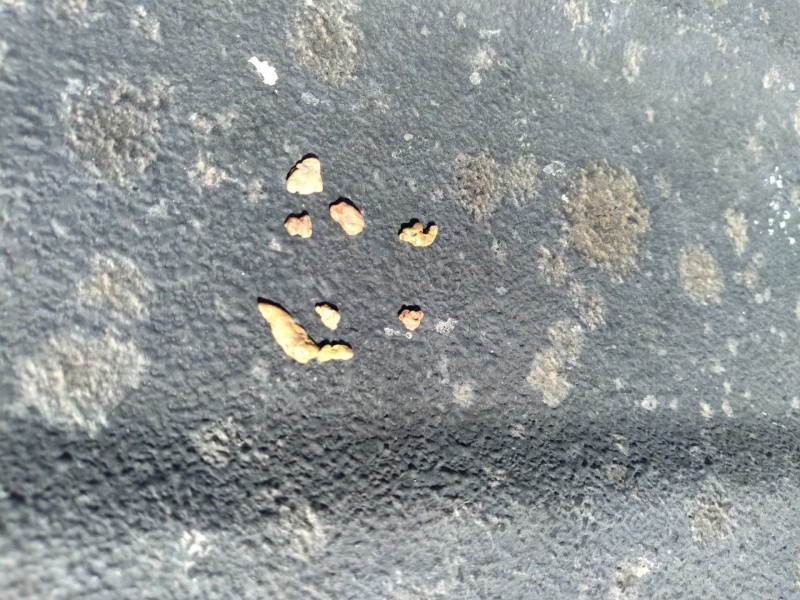
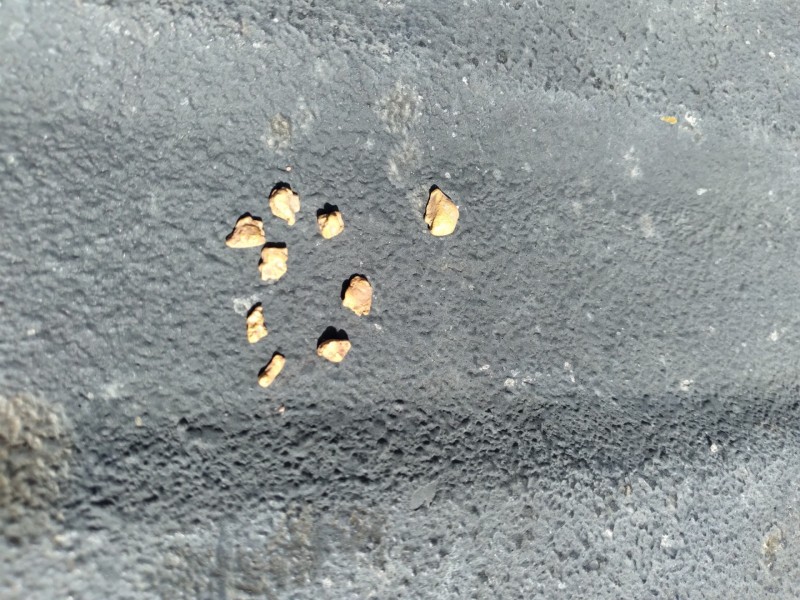

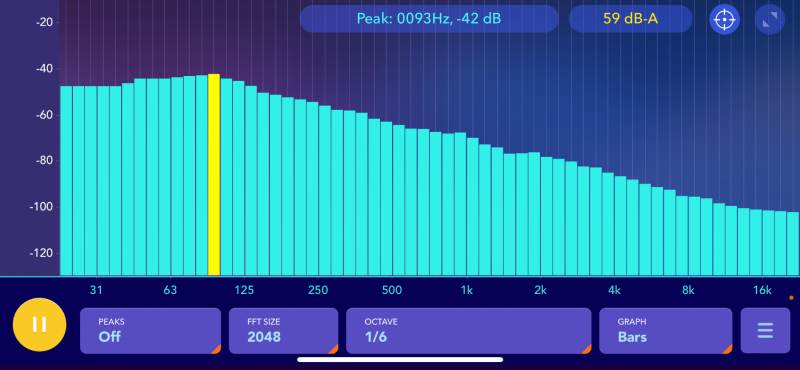
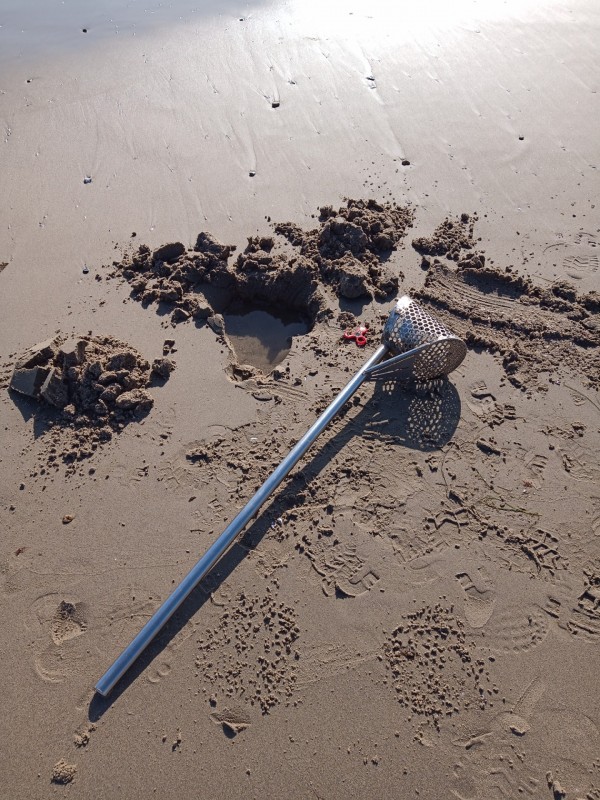
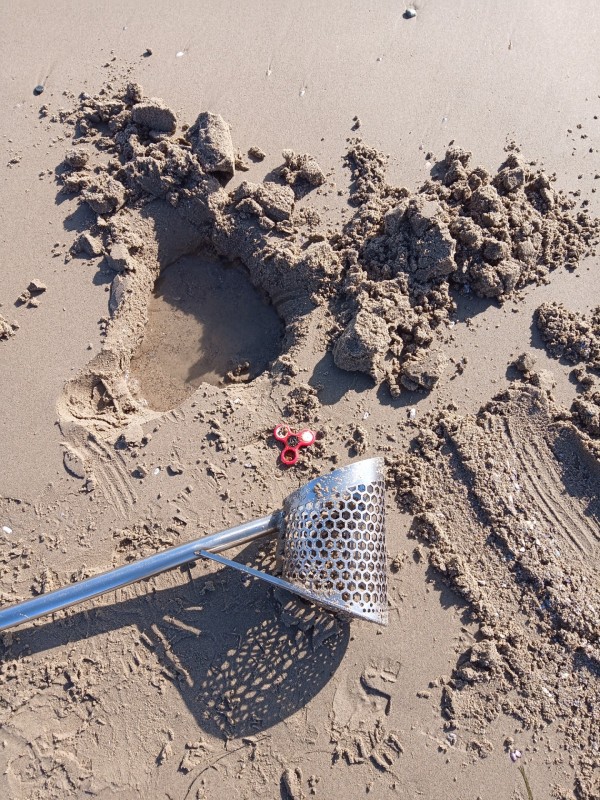
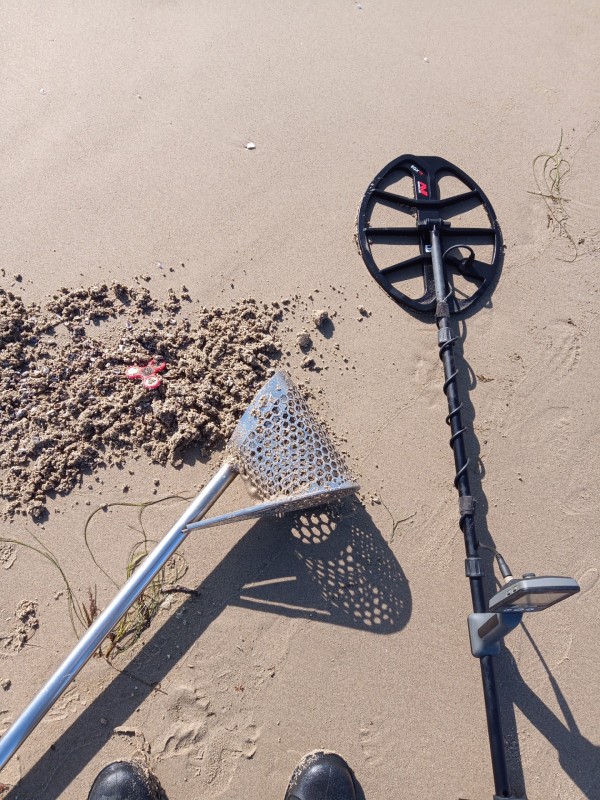

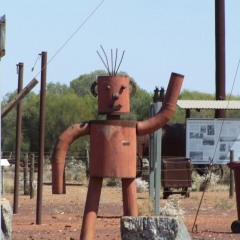

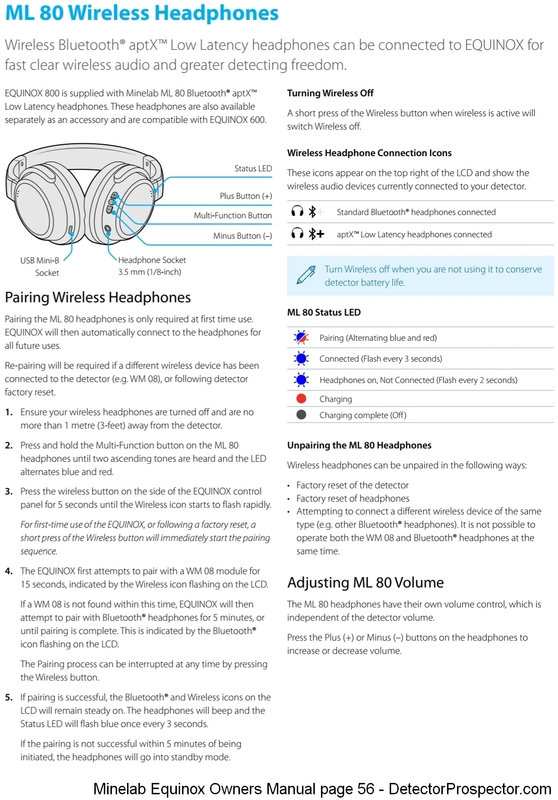
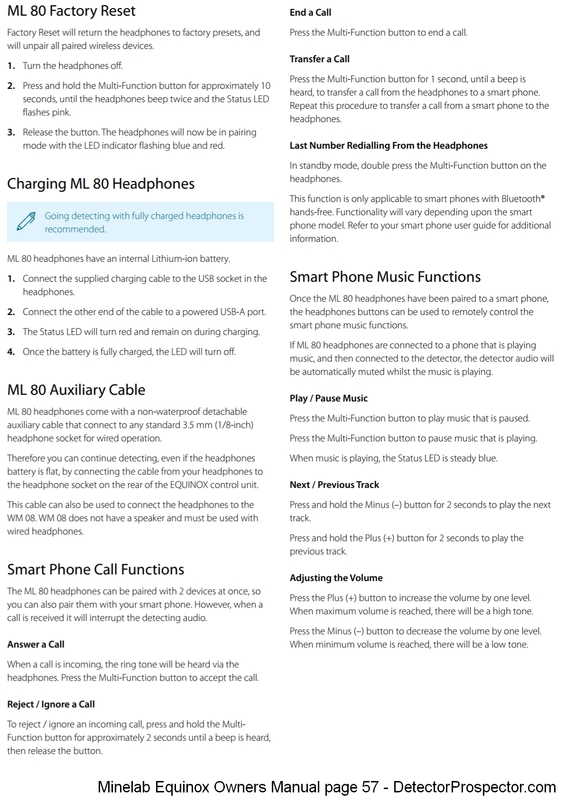



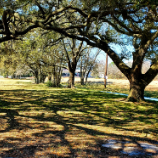
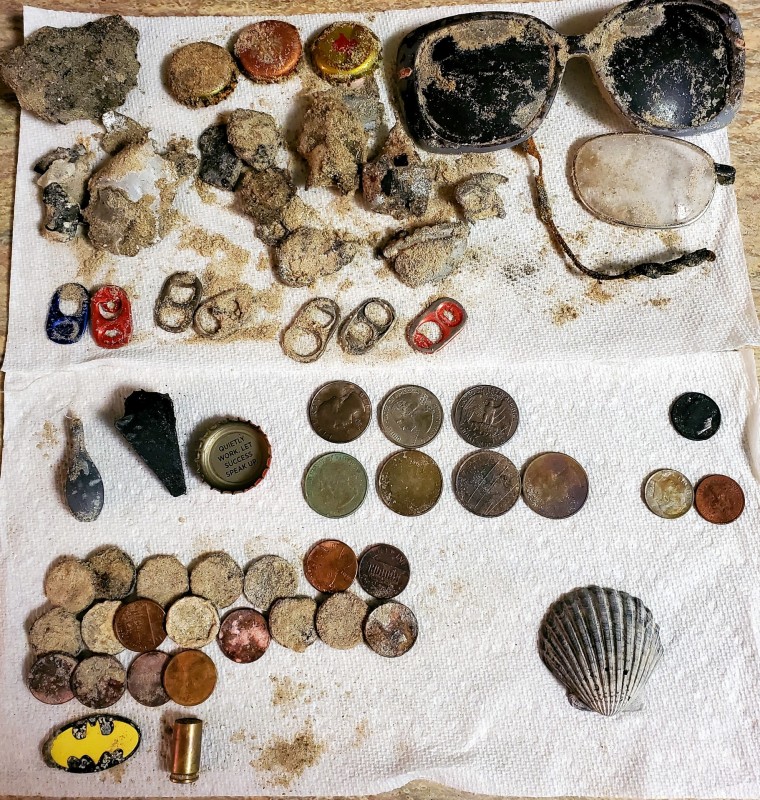


.thumb.jpg.d71314a45f3dc82bf75ac1b96e7e9201.jpg)

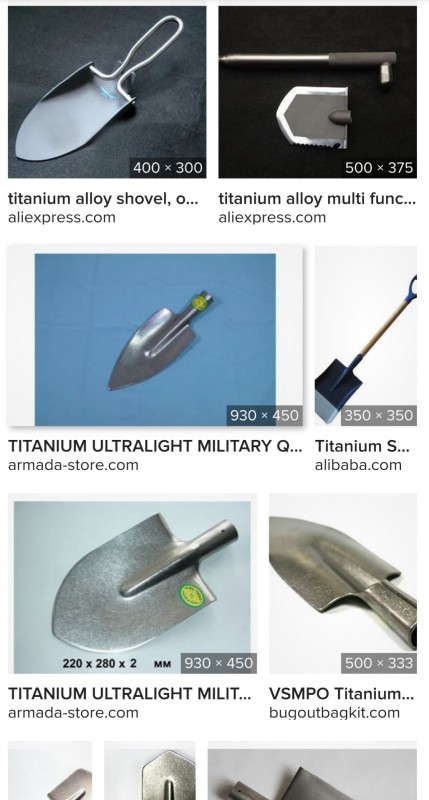
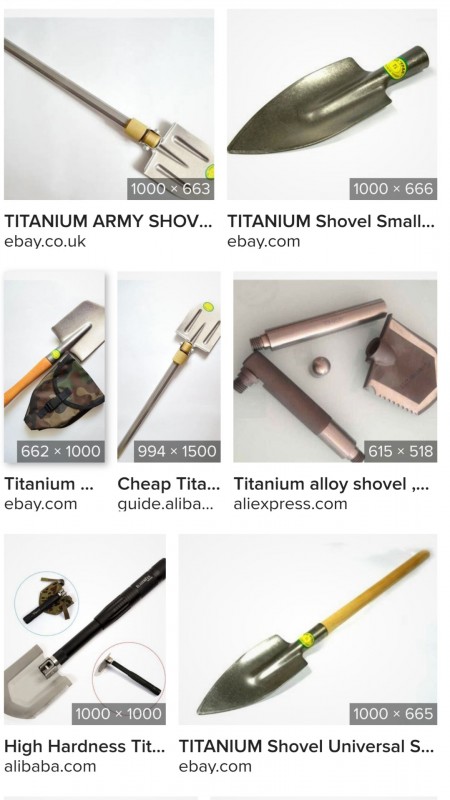
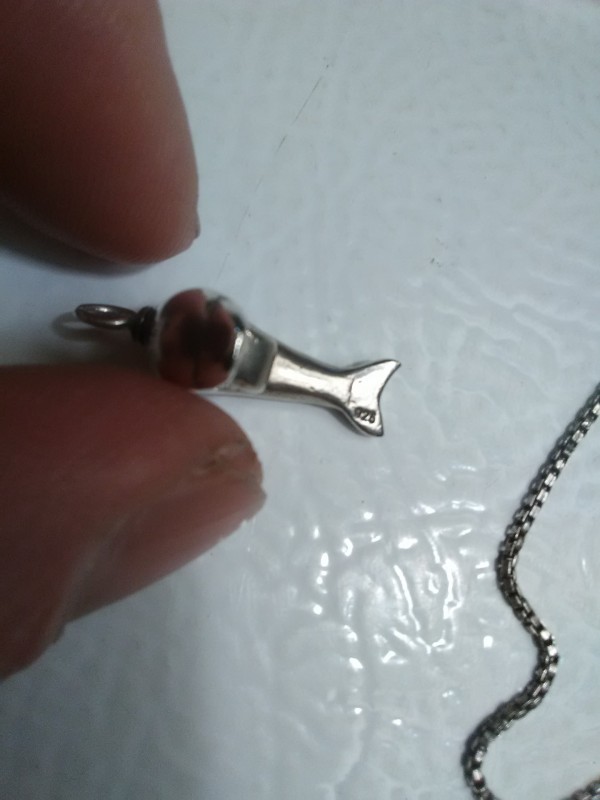
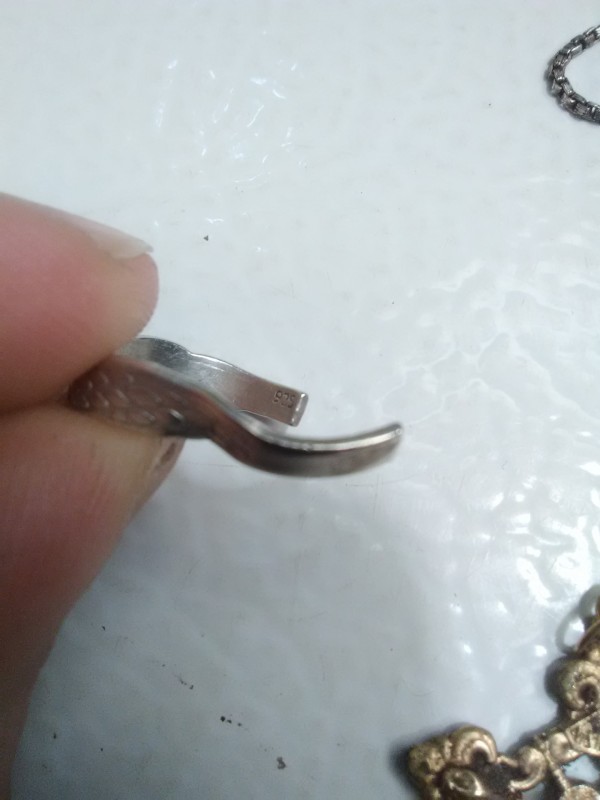
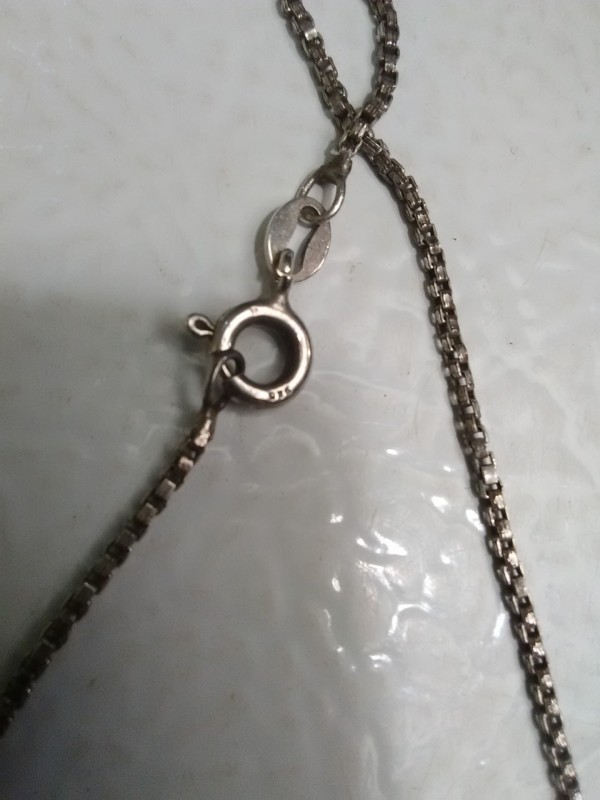
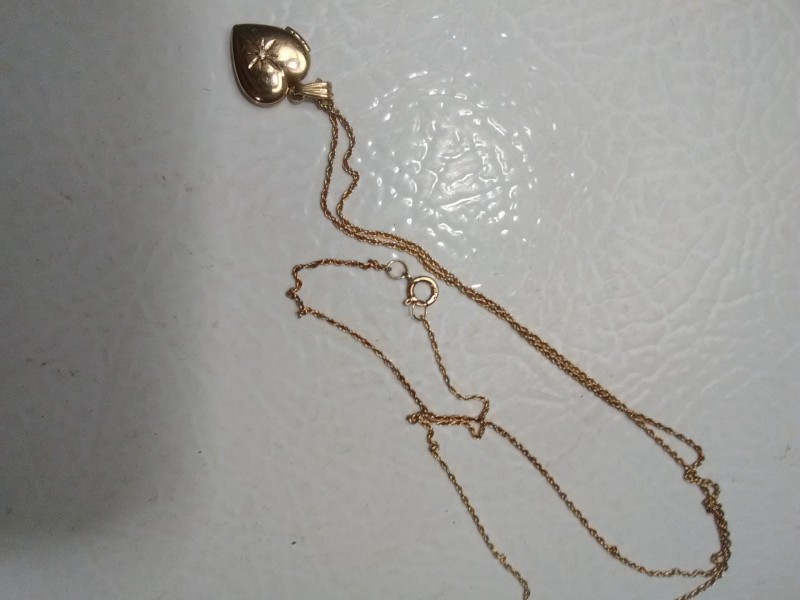
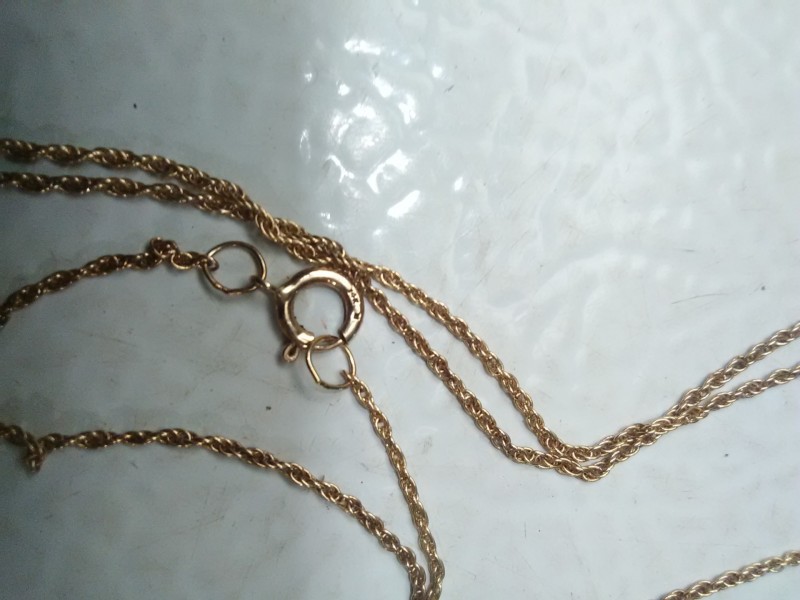
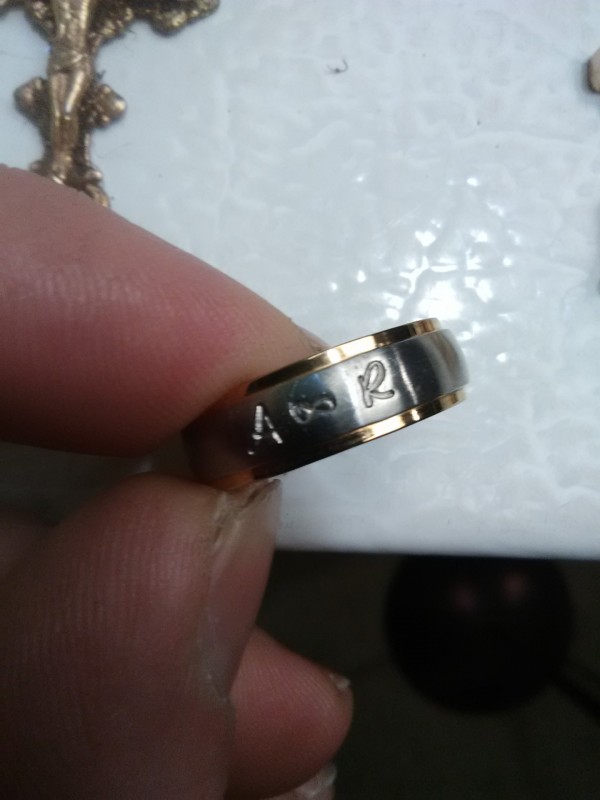
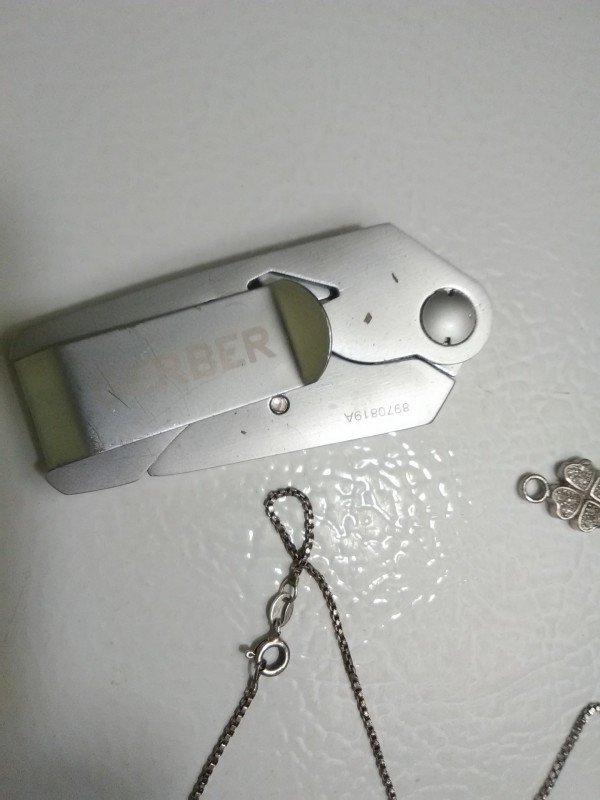
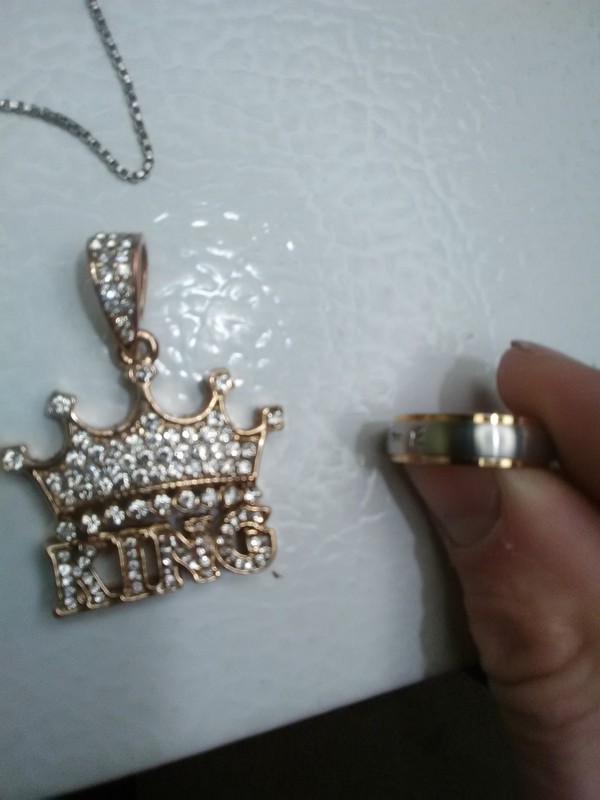

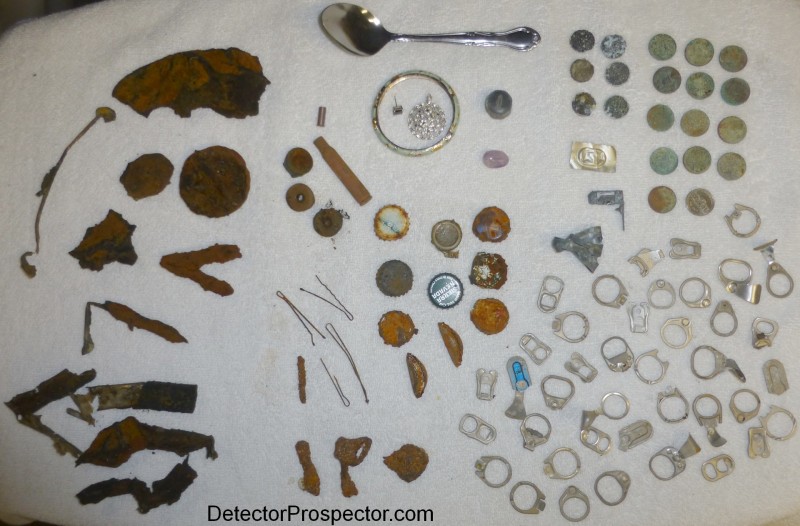
.thumb.jpg.95344db3aeef0a4c6c73420daa366191.jpg)




